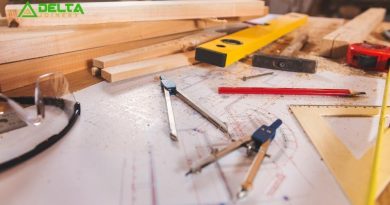Woodworking Novice Project Reflections – Project Plan Introduction
When you have decided to do a woodworking project the first and most important step is to research and develop a project plan. Woodworking projects proceed smoother if you have a clear and precise plan. Woodworkers who skip or gloss over this important initial step increase their risk of overlooking different aspects of the project. Poor planning will typically result in poor results which are a waste of your time and money.
Everyone’s goal when doing a woodworking project is to ultimately produce a usable item. This item hopefully fulfills the requirements that you have identified for the result. What this means is did your project turn out like you thought it would? Skipping the planning phases to try to get quick results rarely works to the woodworker’s satisfaction.
It can be beneficial to review a variety of woodworking project plans that are available online or in your local library. It is also useful to inspect manufactured items that might be close to what your project results are expected to be. The combination of these two areas should help you to decide on a plan that satisfies your needs.
Some woodworking plans you discover, might not meet all of your needs. If that happens, be creative and modify them to accommodate your special or unique situation. It can be gratifying to think of a modification that makes your woodworking project unique and stand out.
Woodworking projects should not be started without a good set of project plans.
No matter if you develop your plan or get it from somewhere else, several items should be in your plan. After you have decided what you are going to build, your next step should be to make an initial estimate of your time and cost. A common mistake of the novice woodworker is to grossly underestimate either one of these. Do not forget to include the cost of new tools, time to research for buying, and time to learn how to use them.
The next step in your plan should pertain to your materials. There should be a comprehensive materials list. It is frustrating when you are starting to assemble your piece and your workflow is interrupted because you are missing some item that had been accidentally left off the materials list or was incorrectly listed. If multiple assembly pieces are to be cut from the same piece of wood, be sure it is clear how to lay these pieces out.
The last item in your plan is the assembly. Detailed step-by-step instructions are a must. These instructions should reference assembly diagrams. The number of assembly diagrams needed is dependent on the complexity of the project. Do not be embarrassed to do some type of dry run assembly. Doing this might highlight some assembly problems that you might not have anticipated. Sometimes building a prototype out of cardboard for a mock assembly can be helpful.
It cannot be stressed enough that with all projects, big or small, easy or hard, a woodworking project plan that provides all of the necessary detail and steps required to create an item will give your project a better chance of success. If you are expending your time, money, and effort to make an object that will be useful for you or another, it only makes sense to begin from a good starting point, which is a good set of directions that are provided in good plans.




